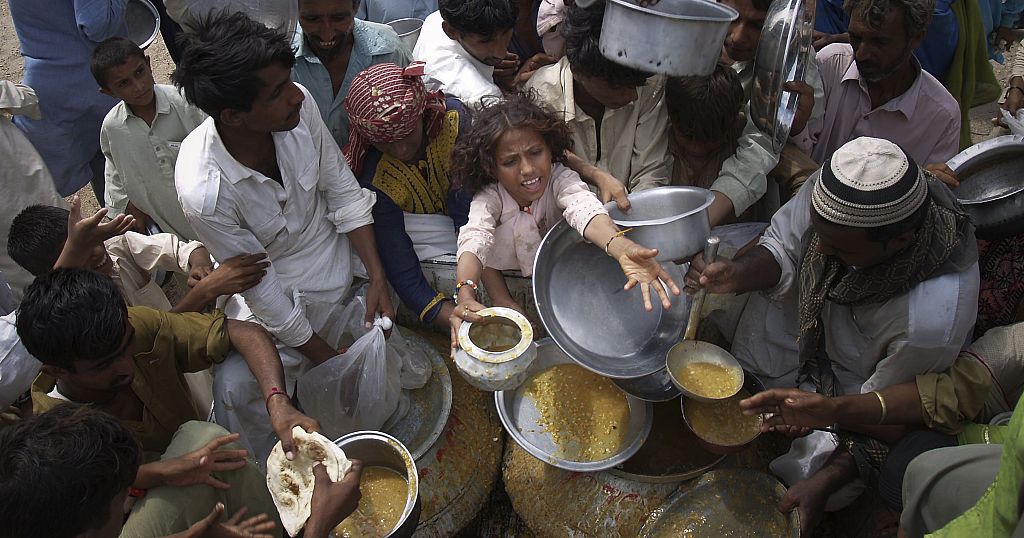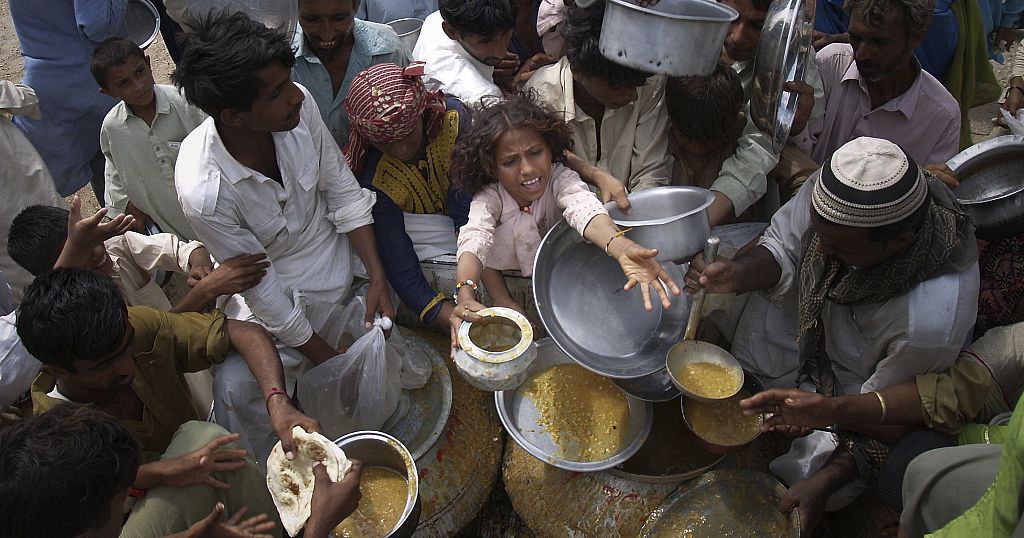
Over 282 million people in 59 countries and territories suffered acute food insecurity in 2023, according to the 2024 Global Report on Food Crisis. These numbers represent a 24 million increase in comparison to the previous year.
Conflict, extreme weather events, and economic shocks are the main drivers behind acute hunger worldwide, reveals the report, authored by the Global Network Against Food Crises (GNAFC), an alliance of humanitarian and development actors launched by the Food and Agriculture Organization of the United Nations (FAO) with other partners in 2016.
The increase in the number of people facing acute food insecurity is explained by greater analysis coverage and the deteriorating acute food insecurity in some countries and territories, such as conflict hotspots like Gaza and the Sudan.
The five countries with the largest number of people facing high levels of acute food insecurity are Democratic Republic of the Congo, Nigeria, the Sudan, Afghanistan, and Ethiopia, while Palestine, South Sudan, Yemen, the Syrian Arab Republic, and Haiti have the largest share of analysed population facing high levels of hunger, according to the report.
The Director of the FAO Office of Emergencies and Resilience, Rein Paulsen, said that one of the report’s takeaways is that the percentage of the population that faced hunger crisis in 2023 (21.5 percent of the analysed population) continues to be persistently high over the years.
“Even more than the absolute numbers, I think one of the most important findings is that the prevalence, so the percentage of the assessed population in acute food insecurity, remained stubbornly high in 2023,” said Paulsen.
Initially launched in 2016, the 2024 Global Report on Food Crisis shows that food crises are severe and protracted, with 36 countries facing hunger crises for eight consecutive years.
The Global Network urged to shift towards a more integrated approach for prevention, anticipation, and preparedness to break this vicious cycle, while Paulsen called for a “significant change” in the strategies aimed at tackling food crisis.
“More than 80 percent of people in need of humanitarian assistance, living in situations of acute food insecurity, are connected to agriculture, live in rural areas, and yet only 4 percent of the funding that goes to food security activities, in food crisis context, only 4 percent goes to agriculture. So that’s telling us we need to have some fairly significant shifts and changes there,” explained Paulsen.
The report identifies conflicts, extreme weather events, and economic shocks as the three main drivers behind the exacerbation of food crises in the world.
Paulsen explained that these drivers often operate interlinked and superimposed on structural vulnerabilities, making it harder for households to cope with and recover from shocks.
“The single most significant driver of acute food insecurity is conflict and violence. This was the primary driver in 20 of the 59 countries [studied in the report], and represented in absolute terms, the key driver for the largest number of people in acute food insecurity. The second driver then relates to extreme weather events. We’ve had the hottest year on record, the El Niño phenomenon, just to name one of the factors, has been a key driver behind it, so climatic events was the second most significant driver. And economic shocks was the third most important driver. And again here, I think it’s important not to view these three drivers in isolation. What we see is that often, typically, these three have been mutually reinforcing and together exacerbated the acute food insecurity situation,” explained Director of the FAO Office of Emergencies and Resilience.
Paulsen specifically commented on the situation in the Sudan, which represents one of the worst hunger crises in the world, with 18 million people facing acute food insecurity.
Commenting on the findings of a recent trip he made to the country, Paulsen said he witnessed how the overlapping effects of the ongoing civil war and the climate crisis have profoundly deteriorated food insecurity.
“We’ve seen a significant deterioration in the last 12 months, and it’s in the last 12 months because it’s 12 months ago this month that fighting started in the country, again showing this direct relationship between conflict and acute food insecurity. But the other thing that we’ve seen in Sudan is the impact of the climate crisis and climate change. Some of the communities I visited in Red Sea State, for example, showed me basic agricultural infrastructure that had been washed away the last time that there were significant rains, earth dams that were required to keep water in place to allow for hand irrigation of fields, for example, had been broken through because the rains came much more quickly and with larger amounts than they were anticipating. And so again, we see this overlap geographically between conflicts, between climate crisis and indeed economic shocks as well.”
The Global Network promotes the need for more complementary humanitarian and development responses to food and nutrition crises that also contribute to peace as a critical approach to tackling the multidimensional drivers. The partners stressed that peace is a prerequisite of food security.
Read More: World News | Entertainment News | Celeb News
African News







